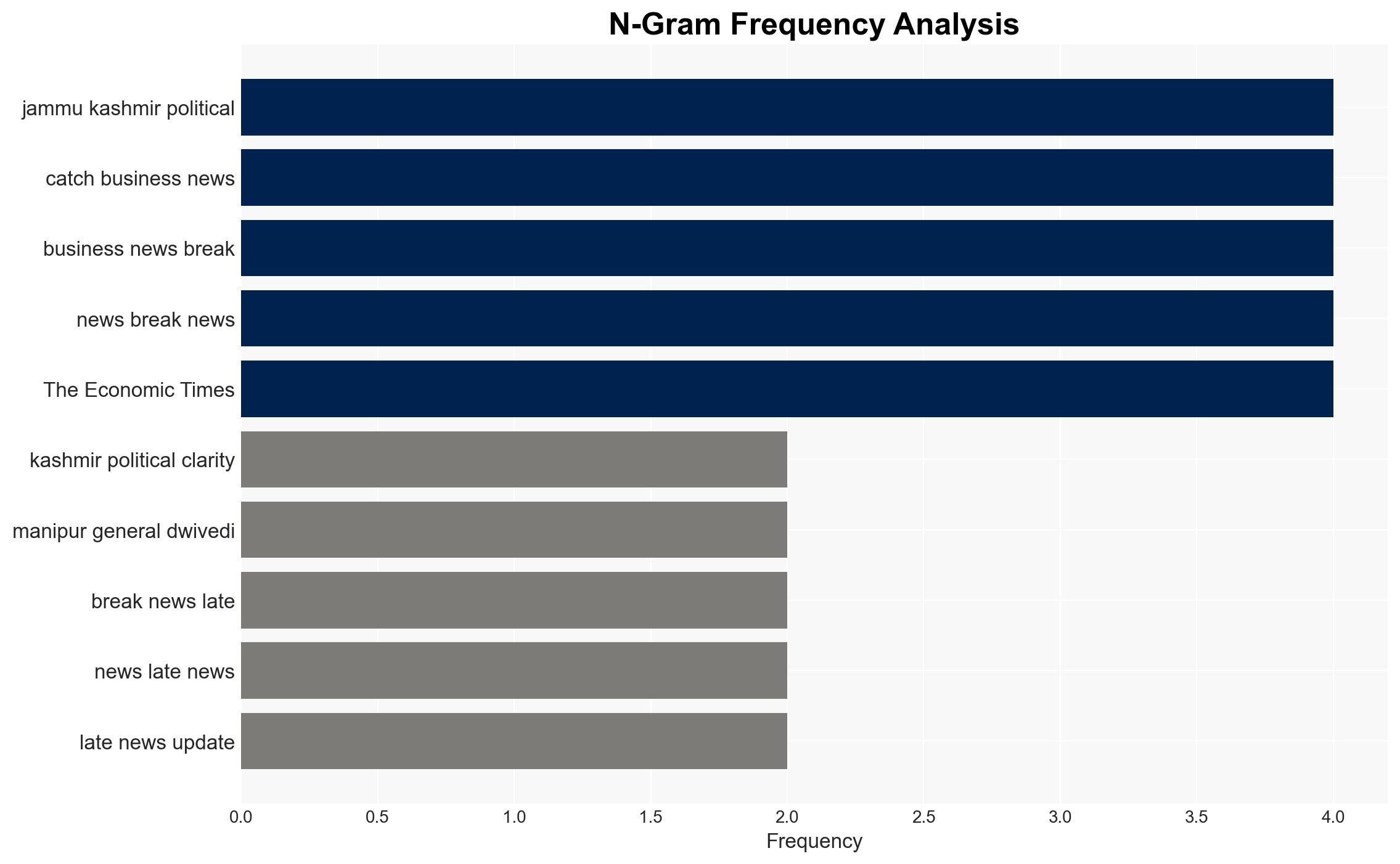Op Sindoor just a trailer which ended in 88 hours CDS Gen Upendra Dwivedi warns Pakistan says India ready to teach it how to behave – The Times of India
Published on: 2025-11-17
AI-powered OSINT brief from verified open sources. Automated NLP signal extraction with human verification. See our Methodology and Why WorldWideWatchers.
Intelligence Report:
1. BLUF (Bottom Line Up Front)
There is a moderate confidence level that India’s recent military posturing and rhetoric towards Pakistan, as articulated by CDS Gen Upendra Dwivedi, is primarily aimed at reinforcing deterrence against state-sponsored terrorism. The most supported hypothesis is that India seeks to maintain regional stability while deterring future provocations from Pakistan. Recommended actions include diplomatic engagement to de-escalate tensions and enhance regional security cooperation.
2. Competing Hypotheses
Hypothesis 1: India’s military rhetoric is a strategic deterrence measure aimed at preventing future terrorist activities sponsored by Pakistan.
Hypothesis 2: The statements are primarily domestic political posturing intended to consolidate internal political support and demonstrate strong leadership.
Hypothesis 1 is more likely given the historical context of cross-border tensions and India’s consistent policy stance against terrorism. Hypothesis 2 cannot be entirely dismissed, but the emphasis on multidomain engagement suggests a broader strategic objective beyond domestic politics.
3. Key Assumptions and Red Flags
Assumptions:
– India perceives a credible threat from Pakistan-sponsored terrorism.
– Pakistan’s policy will not change without significant external pressure.
Red Flags:
– Potential for misinterpretation of military rhetoric by Pakistan leading to escalation.
– Lack of verifiable evidence of Pakistan’s current intentions and capabilities.
4. Implications and Strategic Risks
The primary risk is escalation of military tensions, which could destabilize the region. There is also a risk of cyber retaliation or misinformation campaigns. Economically, increased tensions could deter foreign investment and impact regional trade. Politically, failure to manage the situation could lead to domestic unrest in both countries.
5. Recommendations and Outlook
- Engage in backchannel diplomacy to reduce tensions and build confidence measures.
- Strengthen intelligence-sharing with allies to monitor and counter potential threats.
- Best-case scenario: De-escalation and resumption of dialogue leading to improved bilateral relations.
- Worst-case scenario: Military confrontation with significant regional and global repercussions.
- Most-likely scenario: Continued tension with sporadic diplomatic engagements and minor skirmishes.
6. Key Individuals and Entities
Gen Upendra Dwivedi (CDS of India), PM Modi (India), Pakistan’s military leadership.
7. Thematic Tags
Structured Analytic Techniques Applied
- Cognitive Bias Stress Test: Expose and correct potential biases in assessments through red-teaming and structured challenge.
- Bayesian Scenario Modeling: Use probabilistic forecasting for conflict trajectories or escalation likelihood.
- Network Influence Mapping: Map relationships between state and non-state actors for impact estimation.
Explore more:
National Security Threats Briefs ·
Daily Summary ·
Support us
·





